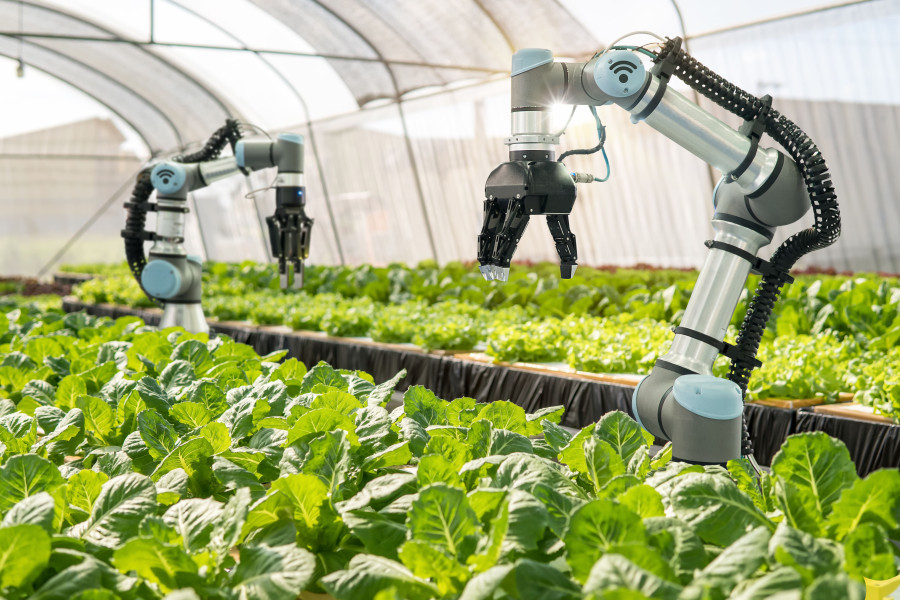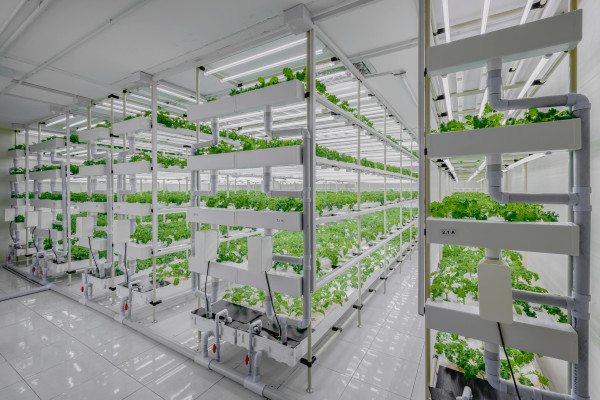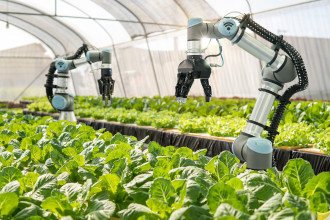What is Agricultural Biotechnology
Agricultural biotechnology refers to the use of technology to modify and improve plants and animals used in agriculture. Biotechnology has revolutionized the agricultural industry, providing a way to produce more food with fewer resources, and in a sustainable manner.
There are several techniques used in agricultural biotechnology, such as genetic engineering, molecular markers, and tissue culture. Genetic engineering involves the direct manipulation of an organism's genes to produce a desired trait, such as resistance to pests or drought. Molecular markers are used to identify and select plants with desired traits, while tissue culture is used to propagate plants with desirable traits, such as disease resistance or high yield.
The use of these techniques in agriculture has significantly increased crop productivity, improved crop quality, and reduced the use of harmful pesticides and herbicides. Additionally, biotechnology has enabled the development of crops that can grow in challenging conditions, such as extreme temperatures or limited water availability. This has the potential to alleviate hunger and food insecurity in developing countries.
Despite its potential benefits, agricultural biotechnology is not without challenges. One of the major concerns is the potential impact on biodiversity, as the introduction of genetically modified organisms (GMOs) may disrupt ecosystems. Additionally, there is a growing concern among consumers about the safety and ethical implications of genetically modified food.

History of Agricultural Biotechnology
The history of agricultural biotechnology dates to the early 20th century when Gregor Mendel discovered the basic principles of heredity in plants. However, the modern era of agricultural biotechnology began in the 1970s when scientists developed the first techniques for genetic engineering.
One of the key milestones in the history of agricultural biotechnology was the development of recombinant DNA technology in the 1970s. This technique allowed scientists to manipulate and modify the genetic material of organisms in a way that was not previously possible.
In the 1980s, the first genetically modified plants were created, including tobacco plants that were resistant to antibiotics. In the 1990s, genetically modified crops began to be commercially produced, with the introduction of the Flavr Savr tomato, which was genetically modified to have a longer shelf life.
Another major breakthrough in agricultural biotechnology was the development of gene editing techniques such as CRISPR/Cas9 in the early 2000s. This technology allows scientists to make precise modifications to the genetic material of organisms, opening new possibilities for agricultural biotechnology.
Today, agricultural biotechnology continues to evolve, with ongoing research into new techniques and applications. Some of the current focus areas include the development of crops that are resistant to pests and diseases, as well as crops that can grow in harsh environments such as drought-prone areas.
Possibilities of Agricultural Biotechnology
- Increased crop yields: One of the main advantages of agricultural biotechnology is the potential to increase crop yields. Biotech crops can be engineered to resist pests and diseases, tolerate drought and other environmental stresses, and produce more fruit or vegetables per plant. This means that farmers can produce more food on the same amount of land, which is especially important as the global population continues to grow.
- More sustainable farming practices: Biotechnology can also contribute to more sustainable farming practices. For example, crops can be engineered to require less water, fertilizer, and other resources, which can help to conserve natural resources and reduce the environmental impact of agriculture.
- Better nutrition: Biotechnology can also be used to improve the nutritional content of crops. For example, crops can be engineered to produce more vitamins or minerals, or to be more easily digestible. This can help to address nutritional deficiencies in certain populations and improve overall health.
- New products and markets: Biotechnology can also open up new product and market opportunities for farmers. For example, crops can be engineered to produce novel products such as biofuels, industrial chemicals, or pharmaceuticals.

Challenges
Agricultural biotechnology techniques are already being used in many different ways to improve crop productivity, increase resistance to pests and diseases, and enhance the sustainability of farming practices. However, implementing these techniques is not always straightforward, and there are challenges that must be addressed to fully realize their potential.
One of the main challenges is regulatory approval. Many countries have strict regulations governing the use of genetically modified organisms (GMOs), which can make it difficult for farmers to adopt these technologies. For example, in Europe, there are strict regulations on the use of GMOs in agriculture, which has slowed the adoption of biotech crops in many parts of the continent.
Another challenge is ensuring that these technologies are accessible to small-scale farmers. Many of the most innovative agricultural biotechnologies are developed by large biotech companies, and the cost of accessing these technologies can be prohibitive for small farmers. This can create a divide between large-scale commercial farming and small-scale subsistence farming.
Despite these challenges, there are many opportunities for agricultural biotechnology to improve farming practices and increase food production. For example, by using genetic engineering to develop crops that are resistant to pests and diseases, farmers can reduce their reliance on harmful pesticides and herbicides. This not only benefits the environment but also improves the health and safety of farmers and consumers.
Similarly, by developing crops that are more drought-resistant, biotechnology can help farmers cope with the effects of climate change and reduce the risk of crop failure. This can help to ensure food security and stability in areas that are particularly vulnerable to environmental changes.
Agricultural biotechnology can also help to improve the nutritional content of crops. For example, researchers are working on developing rice with increased levels of vitamin A, which can help to combat vitamin A deficiency in developing countries. This could have a significant impact on global health and well-being.
Conclusion
In summary, agricultural biotechnology techniques have come a long way since their inception in the 1970s, with significant breakthroughs in genetic engineering, genome editing, and biotechnology tools. These techniques have the potential to increase crop yields, improve resistance to pests and diseases, and promote sustainable farming practices. However, their implementation comes with challenges such as regulatory concerns, ethical considerations, and potential environmental impacts.
Currently, these techniques are being implemented in agriculture worldwide, with countries like the United States, Brazil, and China being leaders in this field. However, there is a need for a balanced approach that considers ethical and environmental concerns, such as potential harm to ecosystems and the loss of biodiversity.
Agricultural biotechnology techniques have the potential to revolutionize the way we produce food, but we must ensure that they are implemented in an ethical and environmentally responsible manner. By prioritizing sustainability, we can maximize the benefits of these technologies while minimizing their drawbacks. It is important for governments, researchers, and stakeholders to work together to address these challenges and ensure that agricultural biotechnology is used for the betterment of society.
Quickscout
Looking for suitable
technology providers?
Start scouting!







